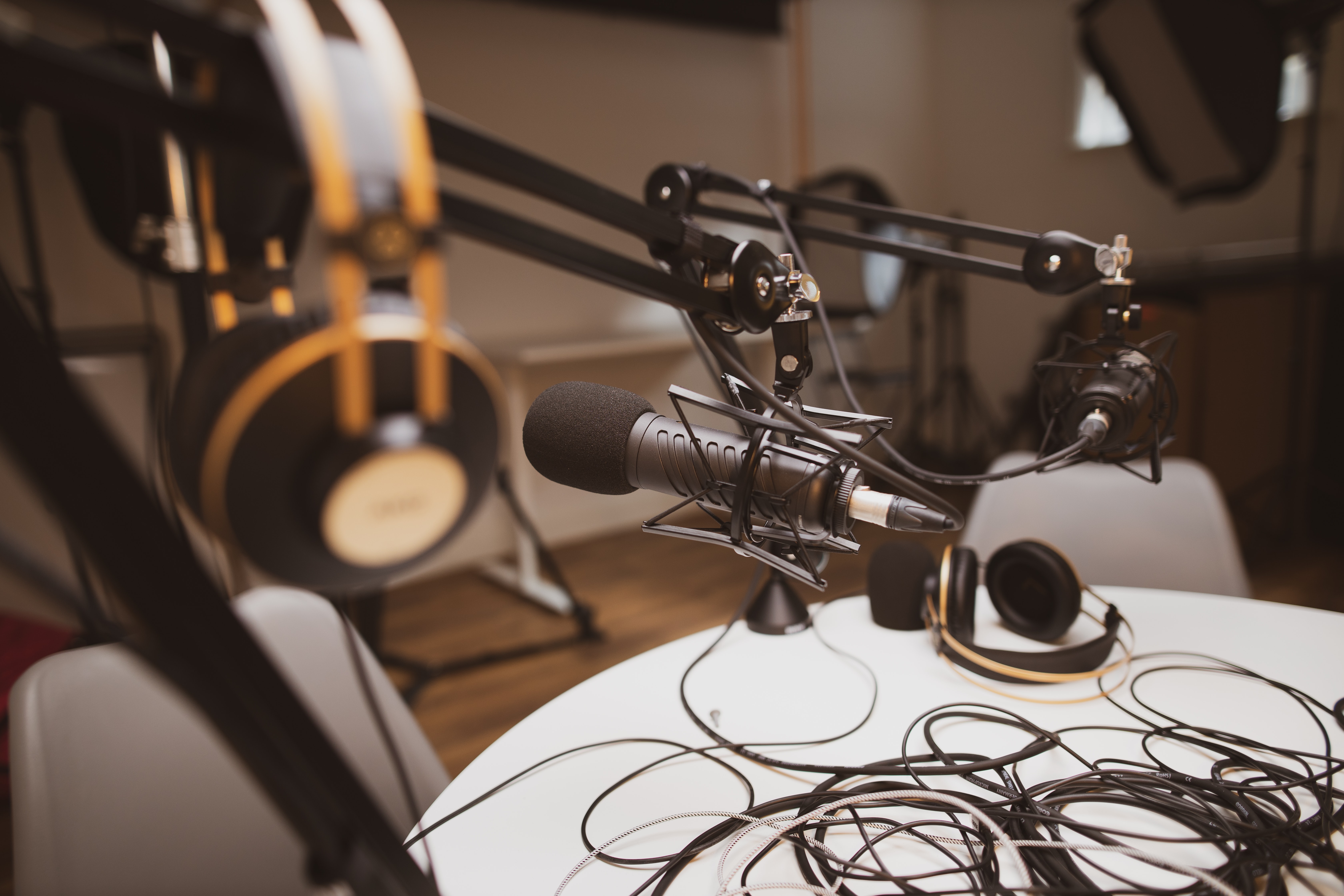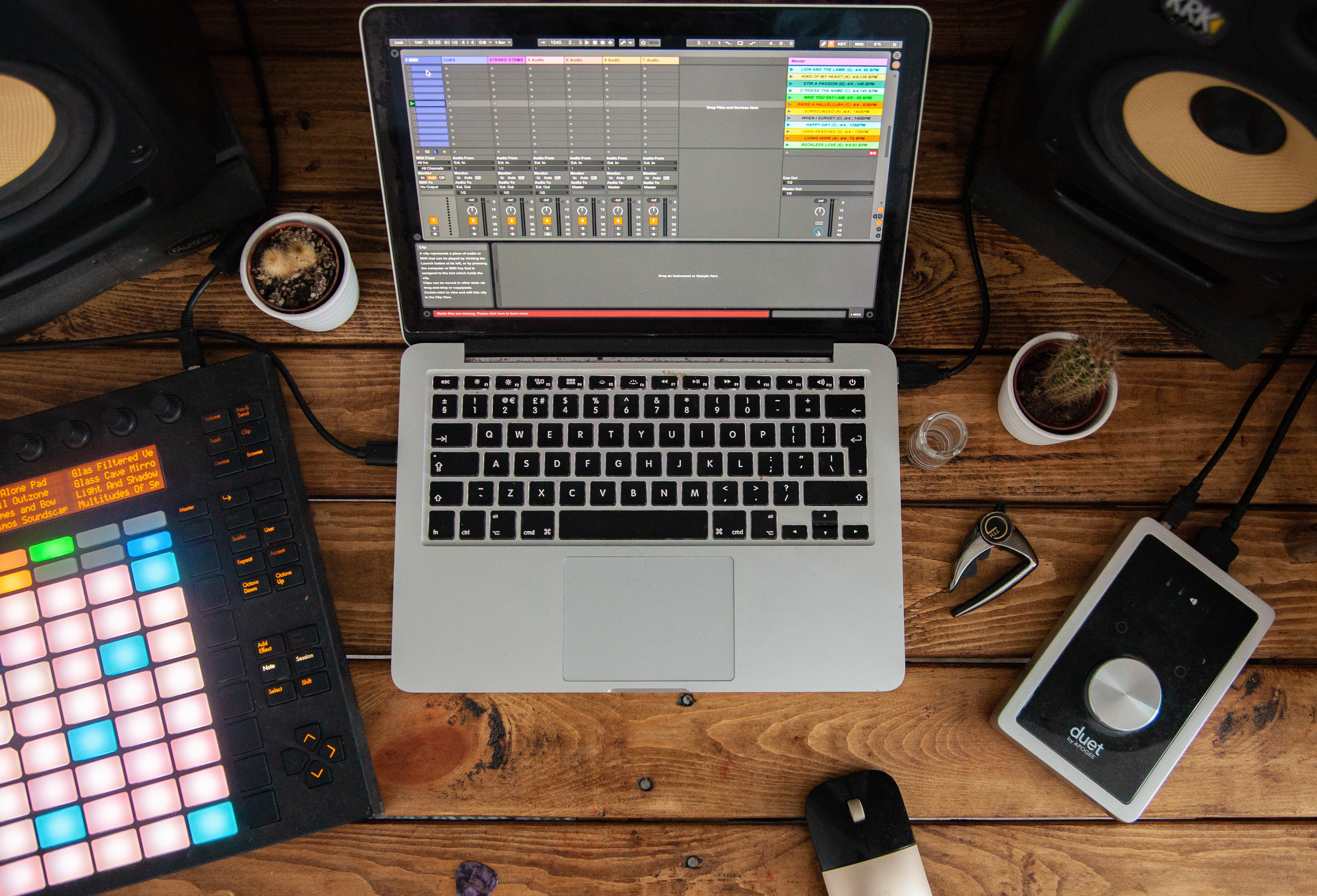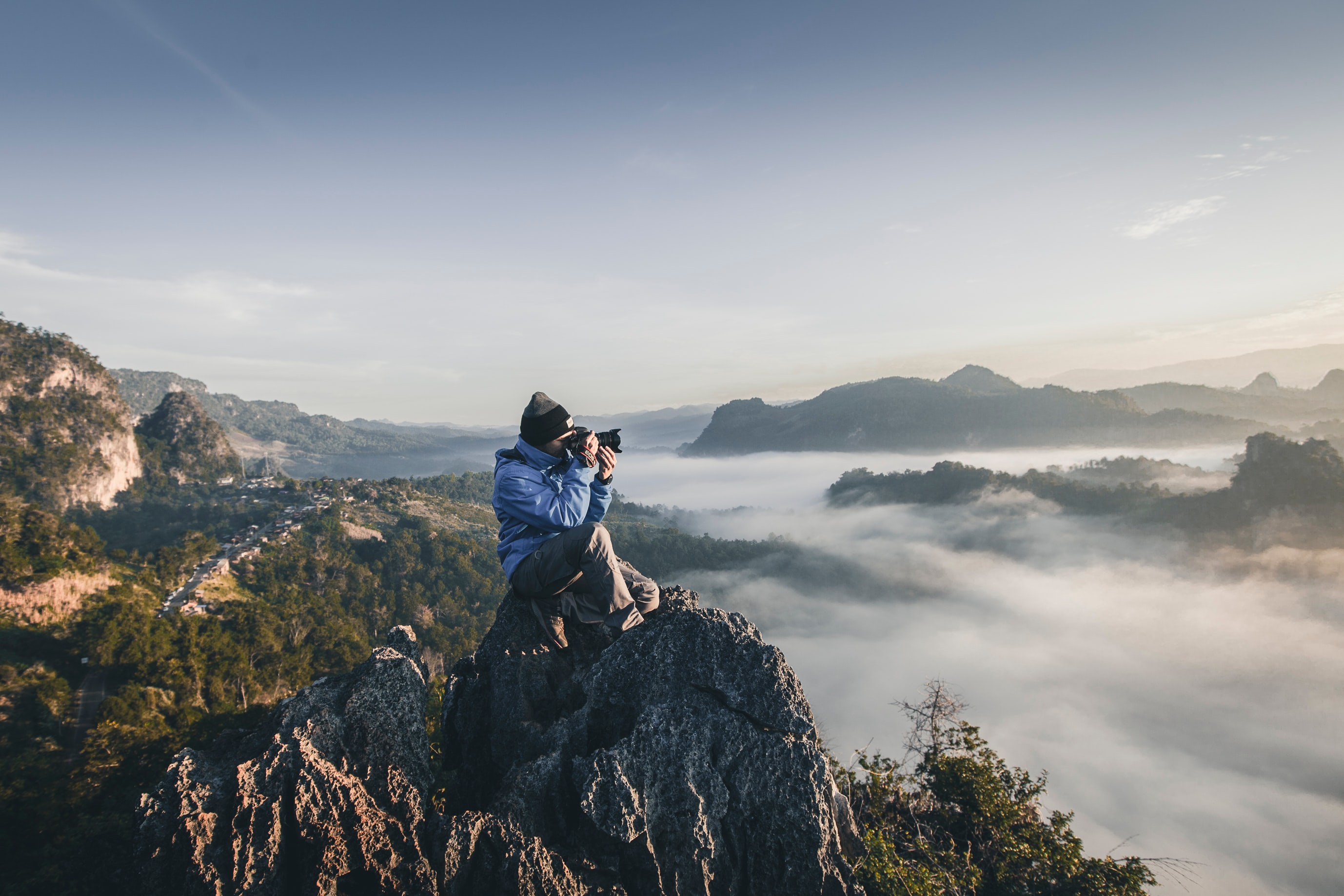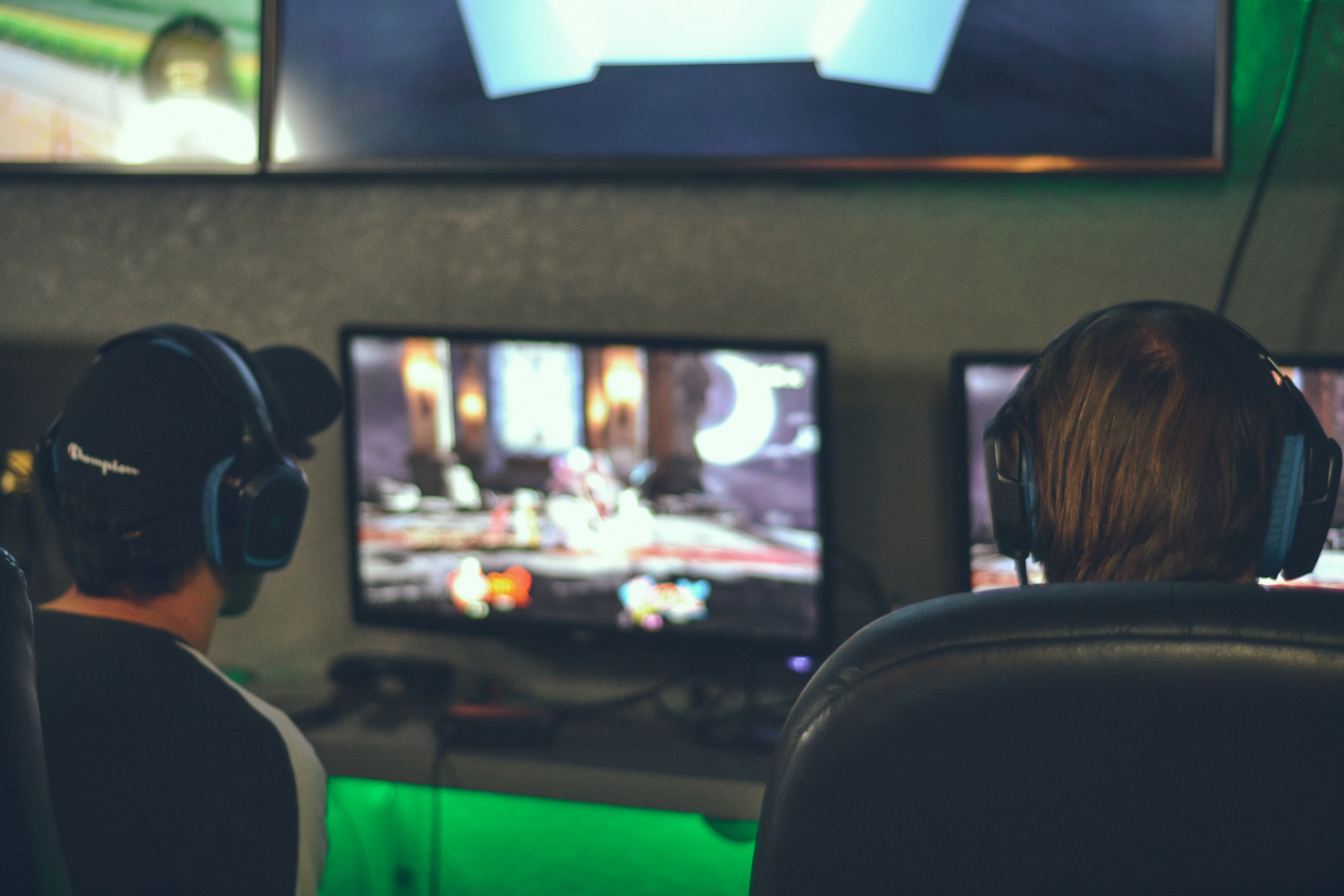So you’ve just come up on a grip of cash. Been saving? Scored a solid tax return? Inheritance from a reclusive mystery novelist?
Whatever the case, by now your mind has probably come up with a good number of ways to give yourself over to the sweet embrace of capitalism and enjoy that money in the most irresponsible of ways. Lingering debt? Sorry to this concept, but just like Keke Palmer, we don’t know what the heck you’re talking about. Feeling like you have enough money to spend without remorse is a sensation too intoxicating not to take advantage of, especially in spring, when everything is fresh and new. Whether you’re updating your wardrobe, buying a new piece of expensive tech, ordering bottle service like you’re Ariana Grande (or at least someone who works for Ariana Grande), or buying that limited edition pair of sneakers, there are a lot of ways that you can give up that money in exchange for a quick rush of dopamine.
But hold up just one sec. What if, instead of doing any of that, you could spend your money, but smartly. On yourself. On your dreams. Your frugality in other parts of your life paying off to help you chase a passion. Think about it. Now might be the perfect time to divert some cash towards that hobby that you secretly wish was a career.
The thing is, creative endeavors are incredibly expensive, and whether you’re recording a podcast, dropping a mixtape, or trying to get in on the streaming game, it’s going to take a good amount of money to get started. Plus, with so much equipment out there it can be hard to know what is essential and what is just nice or convenient to have. So we broke down the must-have’s of each medium to help you know what you’re buying and why you’re buying it. Because the only thing worse than buying a gimbal when what you needed all along was a stabilizer, is not knowing what the hell either does and buying both.
The gear on this list all falls into the sweet spot of being budget-friendly and quality enough to show that you’re taking yourself seriously. Let’s dive in so you can get to work — chasing dreams thanks to your savings, tax return, or lucky windfall.
PASSION 1 — Podcasting

Yes, why aren’t there more podcasts about the Pirates of the Caribbean franchise? You definitely need to get on that right away! But what exactly does it take to start a podcast? The short and unhelpful answer is: it depends. But inarguably, you’re going to need the four things we’ve listed in this section. Before we get to those, here is a brief list of the things that you may think you need, but you don’t: a studio (find a quiet room), professional soundproofing (just use some blankets), and expensive over-the-ear headphones.
Yes, you will look cooler and feel like a pro with over-the-ear headphones, but any pair will do.
Microphones
Dynamic, condenser, ribbon, USB-powered, there are a lot of microphones to choose from on the market but if you’re wondering which one is the best, there is no right answer. There is no “best” microphone for podcasting or any type of recording really. Still, there are a lot of opinions out there. If you don’t know where to start, it’s not a bad idea to check out whatever microphones they use on your favorite podcast. But if you already know your needs, there are a few things to consider. You could buy one of the most widely used microphones for podcasting, the same model used on the most downloaded podcast, for around $300, used. That’s not bad for a pro piece of gear. (Remember, you’re going to need to buy one microphone for every person on the show.)
If you’re on a tight budget and the idea of having to buy more than one microphone isn’t an option, consider checking out the Yeti by Blue Microphones ($130). The Blue Yeti is a USB-powered condenser microphone that is capable of omnidirectional recording, giving you the capability of recording a roundtable of voices with just one microphone. However, condenser microphones are incredibly sensitive, meaning every creek of a chair, passing car, and even a scratch of the chin will likely get picked up in your recording. Not a great option if you’re working around a lot of ambient noise. A more workable option here (and an ideal one for those in need of a multi-mic setup) is to go for a dynamic microphone. Dynamic microphones don’t require an external power source like condenser microphones and tend to pick up sound unidirectionally.
One of the most popular workhorse dynamic microphones is the Shure SM57, a $100 microphone that is so versatile that entire albums have been recorded using just the one mic. So you could pick up four SM57s and have almost everything you need to get started. But if your budget is a little bigger and you want something that is going to look, feel, and sound a little more professional, you can’t go wrong with the Shure SM7B ($400) or the Electro-Voice RE20 ($450).
The Shure SM7B and Electro-Voice RE20 are going to capture the quality of your voice with incredibly natural-sounding results, which is something to consider if the tone of your voice is a big selling point for your podcast.
Mic Stands And Cables
Once you’ve chosen a microphone, you’re going to need a stand to hold it and some cables to plug it in. Your options are really wide here so any desktop microphone stand that works for your budget is adequate, but keep in mind that mic stands probably cost more than you assumed they would. You really get what you pay for here, if you want to buy a mic stand for under $20, expect to constantly be adjusting it. Also, don’t be surprised if it’s not sturdy enough to support your massive SM7B.
Gator Frameworks makes a weighted boom arm stand for $54.99 which will give you a lot of flexibility and adjustability, but if you need something more mobile, consider the Heil Sound Sb-2 for $65, which is table mountable thanks to its c-clamp. A typical XLR microphone cable can run you anywhere between $7 and $40, so consider how many you’re buying and how long you need them to be. Popular brands include Mogami, D’Addario, Hosa, Telefunken, and Rode.
Audio Interfaces
An audio interface will allow you to record audio from a microphone into your computer and you’re going to need to consider your needs here again. If you’re planning on recording a one or two-person show, a two-channel interface like the Focusrite Scarlett 2i2 ($230) is all you’ll ever need. But if you ever invite a guest, or you’re working with a bigger group of voices, you’re going to need more channels — and more channels cost more money. So figure out your needs. The Steinberg UR44 ($300) will give you the capability of recording up to four voices simultaneously and is Apple and Windows compatible.
So Many DAWS So Little Time
There are a lot of different digital audio workstations out there, and if you don’t know anything about recording you might be led to believe some record better than others. This isn’t true, every DAW records audio the same way, so if all you’re doing is recording a podcast you don’t really need the expensive suite of editing options and flexibility professional DAWs like ProTools and Logic offer you. Free options like Audacity and Apple Garageband are perfectly capable of handling even the most professional of operations.
So How Much Should You Expect To Spend?
For a professional-quality four-person podcast set up, with four Shure SM7Bs, four cables, four mic stands, and a four-channel interface you can expect to spend $2,200 using the links on this page. Less if you opt for used microphones. If you’re really on a budget, opt for the Shure SM57s over the SM7Bs, and you’re looking at a grand total of $1,000.
PASSION 2 — Making Music

While music production and starting a podcast require a lot of the same equipment, the world of music is much more vast and the equipment you need is entirely dependent on what genre of music you plan on working in. In truth, with the technology today you can compose an entire album from your phone, and many famous musicians have. Your only true necessities are a computer and a digital audio workstation (DAW), you don’t even need to own or know how to play a single instrument.
But if your background is in jamming out in the garage, you’re probably going to feel a lot more comfortable making music with real instruments. There are no right or wrong choices when it comes to music equipment, everything can be useful, but it’s important to know what kind of music you’re interested in before you start dropping large amounts of money on a bunch of random stuff that doesn’t really work together.
Once you know what you want to make, here are the things you’ll absolutely need to make it all happen.
Microphones
Earlier, when I said there is no “best” microphone for any type of recording, I was being simplistic. Music production will have you in the weeds about the subtle differences between microphones. Nothing captures the boom of a kick drum quite like an AKG D112, and a Neumann U87 through a Neve 1176 on a crooner is a nearly unbeatable combination. But if you don’t know why then you’re not ready to be dropping thousands of dollars on microphones. If you’re looking for a versatile all-around workhorse microphone that’ll give you professional results, is sturdy enough to handle a beating, and works on everything from a drum set to an Erykah Badu caliber singer, you can’t go wrong with that Shure SM57.
The Shure SM57 is a favorite amongst producers of all genres of music, from rap to rock and everything in between. If you’re new to recording with a microphone simply start here, it’s likely a piece of equipment that’ll stay in your arsenal even when you start to have your own opinions and preferences about mics.
Audio/Midi Interfaces
While the beforementioned Focusrite 2i2 is still a good option here, you once again have to consider your needs. If you’re a bedroom musician making instrument-based music a la early Tame Impala, a two-channel interface like the Focusrite 2i2 should suffice. If you plan on using midi controllers like keyboards and sample pads in a more hip-hop or electronic music vein, you’re going to want to have something with Midi capabilities, which the Focusrite 2i2 doesn’t have. If you have a six-piece band and you’re primarily interested in capturing your live sound accurately, you’re going to need a lot more than two-channels, you might need something like the 28 input sporting Steinberg AXR4 or simply something like the 8 input Antelope Audio Zen Tour.
So figure out what exactly you want to record and make your decision based around that. Budget-friendly high-quality two-channel audio interfaces with built-in midi compatibility include the M-Audio M-Track C-Series($119), Presonus Audiobox($99), Mackie ONYX Producer 2.2($180), and are ideal for recording bands piecemeal, rappers, producers, or DJs. If you need four-inputs on a budget, go for the Focusrite Scarlett 4i4 ($230).
Instruments, Controllers, and Soft Synths
There isn’t a single instrument that you actually need to start making music. With some basic knowledge of music theory, you can write entire symphonies with the click of a mouse in your DAW of choice. But if that sounds more like math than music, you’ll probably want to buy a keyboard-based midi-controller with velocity-sensitive touchpads to control your software synths and sample library. The great thing about midi-controllers is that they aren’t instruments, they’re controllers. This means that aside from certain features and workflow advantages, there’s little difference between the $134 dollar M-Oxygen 25 key controller and the $1,049 Native Instruments Komplete Kontrol MkII in terms of quality of sound. People who know what we’re referring to about are flipping out about that statement right now, but if you’re just starting out you need little more than a keyboard, some pads, and the stock plug-ins and softsynths of your DAW.
If you’re more interested in the unique sonic characteristics of hardware style instruments like guitars, drums, synthesizers, and drum machines, there are far too many options out there to cover in one section of an article. Just remember that focusing on your craft and sound is a lot more important than the equipment you use. Frank Ocean still sounds like Frank Ocean if he records a rough demo on an iPhone, matching his studio equipment is not going to give you his sound. Never buy a piece of gear because you think you need it to succeed.
If it sounds good, it is good. If it doesn’t, it needs work.
DAWS
As we stated before, DAWS all record sound in the same way, but there are certain workflow and editing flexibility advantages that the paid DAWS have over free programs like Audacity or Garageband. Logic ($200), Pro Tools ($300 annually), and Ableton Live ($449) are professional-grade digital audio workstations, so learn a little bit about what makes all three unique and base your decision on that.
So How Much Should You Expect To Spend?
The price is going to vary based on what you’re planning to do with music, but for a legit bedroom set-up ideal for piecemeal rock, rap, and electronic music, you can expect to spend $684 on a microphone, midi-controller, Logic Pro, and two-channel interface. If you have a little more to spend and like the feel of a physical instrument, consider picking up the Korg Minilogue ($500) and the Roland Tr-8s drum machine ($650) for a total of $1,814. If you think that’s not enough to make an album, then you’ve never heard of the Gorillaz.
PASSION 3 — Photography/ Video

Photography and video are a bit like music in that there’s a lot of useful equipment out there that you may never need. If you have an eye for daytime street photography, do you really need a tripod? Maybe. But you might be better served to put your money towards a wide-angle lens and a lens hood. Or imagine that your cousin’s friend likes your amateur skate photography so much that she asked you to shoot her wedding for a cool $500. Great, but maybe don’t use the same fisheye lens you used to catch those extreme angles on the vert.
On the video end, you need to set your expectations and be realistic. Video is one of the most cost-prohibitive creative mediums out there. Can you make something incredible with very basic and entry-level gear? Yes. Will you? Depends. You’re not going to be able to pull off sweeping tracking shots without a real budget and you’re going to find out real fast that filming a scene in a car is a hassle for reasons you didn’t even know to think about. But if you’re just trying to capture your mountain bike run, your latest travels, or just planning on making small and intimate documentaries, a DSLR should be all you need to get serious about your content.
Once you figure out what you want to capture, here is where to best focus your funds.
A Camera
No surprise here, but you’re going to need a camera. At the least, you have a cell phone camera so you’re already on your way but if you want to get even more serious about your visuals, consider investing in a DSLR with interchangeable lenses. A DSLR will give you the flexibility to control aspects of your photography and videography that even the best cell phone cameras aren’t really capable of yet, like long exposures, ultra-shallow and natural-looking depths of field, and the ability to capture high-quality images in low light situations.
The big camera brands all make entry-level DSLR’s that’ll help you take full manual control over your visuals like Nikon’s D3500 for $370, Canon’s EOS Rebel T7i for $699, and Olympus OM-D E-M10 Mark II for $549, helping you to produce professional-grade results. Buying a top-of-the-line DSLR isn’t going to help you take better pictures if you don’t know what you’re doing. So don’t get suckered into feeling like you need the best of the best.
Lenses
Once you get deep into the world of photography and videography, you’re going to become obsessed with lenses.
For portraits, nighttime photography, or action shots, a fixed 50 mm f/1.8 lens is your bread and butter, but if you want to shoot sweeping street visuals, you’ll probably want to consider a wider angle fixed lens like a 35mm or even a fish-eye if you’re all about shooting extreme sports. But neither of those lenses would be a great option if what you’re shooting is far away. In that situation, you’re going to want to aim for a 75-300mm Telephoto Zoom lens. If all you can afford is the 18-55mm range kit lens that came with your entry-level camera, that works too, but investing in a higher quality lens will give you more focal length and control of the aperture — which gives you a greater depth of field flexibility, allowing you to make more cinematic visuals.
But again, you just need a lens. Trust your eye and your understanding of composition and any stock lens will serve you well. Some affordable high-quality options include the Canon EF 50mm f/1.8($125) and Nikon 50 mm f/1.8D($130) for portrait work, the Canon EF-S 24mm ($130) or Rokinon 8mm Ultra Wide Angle Fisheye ($219) for more wide-angle purposes and the Nikon 70-300 mm f/4-5.6G ($170) for your telephoto needs. Several camera retailers like Amazon and B&H Photo also sell multi-lens packs.
Accessories
The accessories you buy for your camera also depend on what you’re shooting. Not everybody needs a tripod, but if you’re planning on doing long exposure shots you definitely will. At the very least, you’re going to want to get a bag. Luckily, AmazonBasics makes several affordable bags made specifically for carrying camera gear like the $47 AmazonBasics SLR/DSLR Backpack. Expect to spend anywhere between $25 and $50 for a durable and protective bag for your camera. Tripods come in all shapes and sizes, from the $50 Joby Gorillapod, to the nimble Manfrotto MK190X3-2W ($260). Buy what works for your budget here, but like microphone stands, the cheaper models will end up being more fidgety and unreliable.
If you’re shooting video, you’re likely going to want a gimbal to smooth out your handheld footage and give it a professional fluidity, the DJI Ronin-SC ($439) or the Zhiyun Crane V2 ($319) are both great options that are perfect for most DSLR or mirrorless cameras.
Software
You’re going to want editing software to make sure your photos always look your best. A popular option for photography is Adobe Photoshop ($21 per month). For film, look for Adobe Premiere ($28 per month).
So How Much Should You Expect To Spend?
For a Canon Rebel with three lenses, a backpack, a top-of-the-line Manfrotto tripod, and a gimbal you’re looking to spend around $1,755.
PASSION 4 — Streaming/Vlogging

If you’re planning on simply filming yourself in front of a camera, you’re in luck. You likely have everything you already need. If you have a smartphone or a laptop, you’re done. Get on it! If you want to start streaming, vlogging, or filming yourself playing video games, that’s going to cost you a little bit more. The good news is, it doesn’t have to be a lot. Here are some things you absolutely don’t need: a green screen (yes, it would be cool, but you don’t need it), a gamer’s chair (you don’t even need a chair!), and expensive editing software. The world of streaming and YouTube (though admittedly to a lesser extent these days) is still charmingly lo-fi. The audience on these platforms cares less about audio/video quality and more about the quality of the content.
Your gear will build with your audience, so don’t sweat about having the best of the best here. At the very least, you will need a webcam, smartphone, GoPro, or DSLR (see photography).
Internet
You’re going to need some pretty decent internet upload speeds if you want to minimize lag and low-quality visuals during your live stream, but if you’re just making videos and uploading them to a later time on a platform like YouTube or Vimeo, your upload speeds won’t matter. If you’re not sure what your internet upload speed is, check it at Speedtest and keep in mind you’ll want at least 6 Mbps (megabytes per second) for 720p visuals and up to 13 Mbps for 1080p visuals.
Capture Cards
If you want your audience to see what’s going on on your game console, you’re going to need a capture card like the USB-powered Elgato HD60S ($150). The Elgato offers low-latency 1080p 60 fps capture quality that keeps your visuals crisp and allows your audience to live every gaming moment in real-time with you. The Elgato HD60S is so overwhelmingly preferred by video game streamers that you need not look elsewhere. If you’ve seen something streamed, it was through an Elgato.
Webcams
If your laptop or computer came equipped with a webcam, that’s all you’ll need to start. But if you want to step it up a little bit, a solid option is the Logitech c920 ($60) which offers Full 1080p HD quality at up to 30 fps and crystal clear stereo audio recording (allowing you to go full-on ASMR). Another option is the light-ring equipped Razer Kiyo ($87), which will add some flattering lighting to make you look at your absolute best. If what you want to offer your audience is perfect visual clarity that makes them feel like they’re in the room with you, consider the 4K equipped Logitech Brio Webcam for $160 and get started on those mukbang videos.
Software
Lastly, to begin streaming to YouTube, Twitch, or Facebook Live, you’re going to need some software. Luckily, there are several free options out there like OBS Studio and Streamlabs OBS. If you’re making edited content and uploading it at a later date, both Windows Movie Maker and Apple iMovie are completely free and equipped with all the necessary tools for making great visual content. Don’t spend money here, you really don’t have to.
So How Much Should You Expect To Spend?
For a high-quality stream, you’re looking at a price of around $310 not including your monthly internet bill.
PASSION 5 — Leveling Up Your Kitchen Game

If you’re not looking for stardom as America’s next big podcaster or auteur and you just want to impress the people you see every day, it might be time you finally learned how to cook. We’re not talking about scrambling some eggs in a non-stick pan, we mean making the type of meals that will make other people need to take out their phones and take a picture. If you’re sitting there right now eager to scroll down to the comments to roast me by saying “cooking isn’t a creative hobby” then you, my friend, don’t know how to cook! (And haven’t met the streamers who have proven how to monetize it.)
If we talk about different spatulas, whether or not you should get a colander, or which air fryers are worth your money, we’ll be here all day, so we’re just going to cover a few essentials in your kitchen that’ll open up a world of cooking for you. Once you’re ready, check out our many recipes and get cooking.
Pans
If you don’t already own one, you absolutely need to pick up a cast-iron skillet. Cast-iron holds heat better than any other pan and distributes it evenly across its entire surface, allowing you to get that beautifully caramelized sear on your meats, helping you to make dishes that are as presentable as they are flavorful. This is how you make restaurant-quality food in your home. You can make a variety of dishes with this single pan, from a well-seasoned steak to a sautéed veggie stir-fry, to a whole chicken, to giant loaves of cornbread. Once you learn how to master the iron-skillet, you’re ready to move on to other pans, but chances are the Iron will remain your go-to. A favorite amongst many is the American made Lodge 13.25 Inch Cast Iron Skillet($40), but any 12-inch pre-seasoned cast-iron will do.
A great second addition to your pan arsenal is the two-quart saucepan. The two-quart saucepan will enable you to make soups, boil pasta, make rice, and of course, craft your own at-home sauces that’ll make you feel like you never need to eat at a restaurant again. Of course, you will eat at a restaurant, but your experience in the kitchen will open up a whole new world of appreciation for you and soon you’ll eat every meal trying to detect how it was all put together.
When shopping for a saucepan, look for a copper model, they’re the most responsive to heat changes which give you more control when simmering your delicate sauces. Shineuri makes an affordable ($22.98) 2.5 qt copper saucepan that comes with a clear glass lid and an induction bottom that makes it ideal of gas, electric, induction, and ceramic glass stoves.
A Good Set Of Knives Or At Least The Big Three
If you want to make cooking a much more enjoyable experience, you really need to invest in a good set of knives. That doesn’t mean you need to spring for that expensive wooden cube that comes with every knife you’ll ever need, though those are admittedly very cool. You can get away with purchasing just three knives, so you might as well splurge. First, above all else, you’ll need a good chef’s knife. Generally, a chef’s knife is about six to ten inches in length and is your primary chopping knife, but is also versatile enough to be used for almost anything. It’s called the chef’s knife for a reason!
You’ll find that a lot of the best knives come out of Japan, which is why we’re going to suggest the Tojiro DP F-808 ($81). It’s extremely sharp, made from durable steel, looks awesome, and fairly affordable as far as Japanese-made blades go.
Next in line is the pairing knife. While yes, the chef’s knife is essentially just a big pairing knife, the paring knife’s advantage is in its small size, making it ideal for delicate tasks like precise cuts for your vegetables, coring, and peeling. Our go-to pick is the Wusthof Classic Ikon 3 1/2 inch paring knife ($60). Its large riveted handle and contoured shape help increase control, which is exactly what you want out of a good pairing knife.
Finally, the last knife you need in your arsenal is a large serrated knife. When you need to cut through the bread of your sandwich, slice up some tomatoes, cut through turkey or anything with a texture that works against the smooth cut of your chef’s or paring knife, the serrated knife will be your weapon of choice. Our choice for your kitchen is the Misen Serrated Knife ($60). It’s 10-inches long, allowing you to saw in nice long strokes to cut cleanly through everything from a pineapple to a squash. You can also opt for a blue or grey handle instead of the traditional black.
If you’re buying knives and you don’t have a reliable and easy to clean surface to cut on, consider picking up a wooden cutting board, which won’t dull your blades as quickly as other surfaces. Buy within your budget here.
A Spice Rack
The key to crafting unforgettable dishes and sauces is in your spice rack. Even if you don’t know what half the spices that come in a spice rack like this 18 bottle collection from DecoBros are, just spring for the full collection. Spices are expensive, there is nothing worse than looking up a recipe, finding out you need a spice you didn’t think you’d ever need, and having to drop an additional $10 on your market bill just to pick up an entire bottle you’ll only use for the one meal. That’s why you buy a full spice rack.
A spice rack will incentivize you to explore new flavors, to let your senses and curiosity guide you because at the end of the day it’s experimentation that makes cooking such a joy. Look for a spice rack that gels with your general kitchen decor, and if you’re shopping in person it’s not a bad idea to examine the shakers and see If they’re ill-designed. Kamenstein ($33), Double2C ($31) and McCormick ($63) all make aesthetically pleasing pre-loaded spice racks that’ll open up worlds of cooking in your kitchen.
So How Much Should You Expect To Spend?
For a cast-iron skillet, a saucepan, three knives, and a full 63 bottle spice rack you’re looking to spend around $327. That leaves you a bunch of money left over for the actual food!







